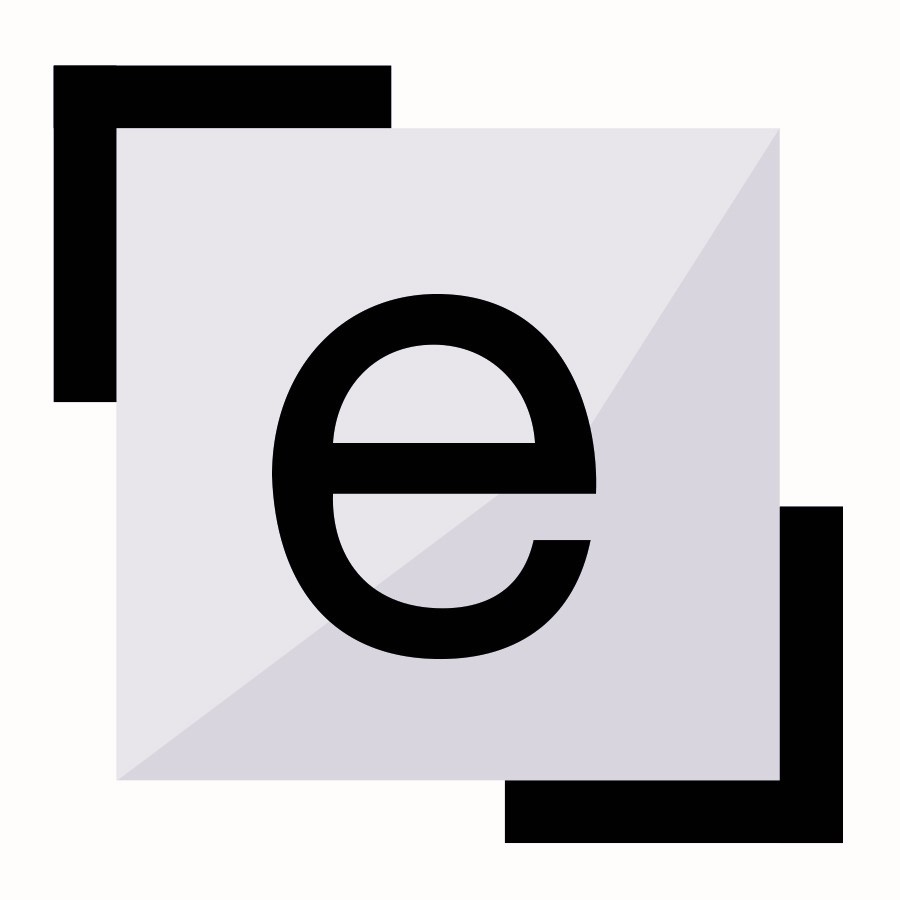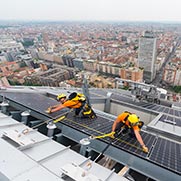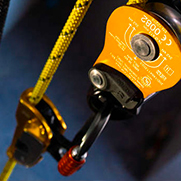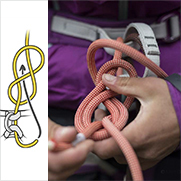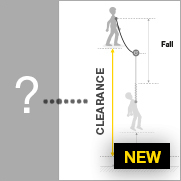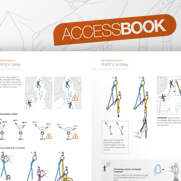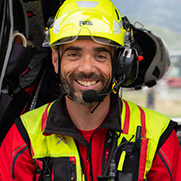Offshore Wind Farm: A Breath of Fresh Air For Future Careers
Renewable energy from offshore wind turbines is becoming one of Europe's most important energy resources. That means new employment opportunities for work at height specialists. Join us as we discover what it's like to work in this exciting profession through the eyes of experienced pro, Odila Gaertner.
March 2 2023
Producing electricity via wind energy has become an important issue, not only to contribute to a CO2-free Europe, but also from an economic standpoint. Germany is a key player in the wind energy industry. In addition to wind turbine construction, new challenges include the maintenance and repair of wind farms. This is the case with the DanTysk and Sandbank offshore wind farms, which Vattenfall operates in the German Bight. With 152 turbines, under the right conditions, these wind farms can generate twice the power of 288 megawatts (MW) and thus provide the energy for a total of 800,000 homes. If a wind turbine fails due to technical problems, the financial loss is enormous. Therefore, the operator must focus all their attention on system readiness and maintenance. Specialists involved must have a high level of technical competence, as well as be familiar with work-at-height and rope access techniques.
Petzl met with Odila Gaertner at the DanTysk offshore park. Odila is a Service Leader for the DanTysk and Sandbank wind farms, owned by Vattenfall and Stadtwerke München. Automotive mechanics expert, former wind technician and surveyor, and level 3 rope access technician, Odila is the full GWO package. She also has training as a respiratory protection officer and emergency response team leader, as well as in HDA (helicopter deck assist) instruction. Since 2015, she has regularly worked and lived in two-week stints in the middle of the North Sea, about 90 kilometers from the mainland. A 3 to 3.5-hour CTV (Crew Transfer Vessel) transports Odila and her fellow technicians every 14 days to the OAP (Offshore Accommodation Platform), where they live and work. They then travel daily to the wind turbines if wind and wave conditions permit. Two wind farms operate from here: DanTysk with 80 Siemens SWT 3.6 MW wind turbines and Sandbank with its 72 SWT 4.0 MW turbines.
Welcome to the World of Offshore Service Technicians
Each shift lasts 12 hours; it's a long day. Odila knows that many technicians experiencing the 14-day offshore shift for the first time are pretty exhausted by the end of it. A technician's work day starts at 6:30 a.m. with the daily Toolbox Talk: a short meeting to go over tasks for that day, cover any special details, and review safety guidelines. Everything is communicated in English. Installation teams are often made up of German and Danish technicians, "but there are also fully German teams and Danish teams, as well as a handful of other nationalities," Odila explains. But the norm is a “DanTysk” mix. After this meeting, which takes 5 to 15 minutes, the technicians prepare for the day. At 7 a.m. sharp, the first CTV arrives to pick up the technicians. During the winter months, they're transported to their workstations by helicopter, because conditions on the North Sea often do not allow for travel by boat.
Three to six technicians can work at the same time. “The main team usually consists of three people. The rescue equipment is designed for a maximum of six people. Our main concern is to send technicians with just the right amount of equipment," explains Odila, as space is limited on the platform. The operation relies on teamwork and a "Safety First" approach that applies to everyone. Odila's coordination plays an important role. When operations are performed outside the platform or when large components are replaced, technicians cannot work below. The danger of something falling from a great height is too high.
All technicians working on wind turbines must have first aid training. There is still a need to establish height rescue teams for the platforms and to equip them with special boats to transport them to the scene of an accident as quickly as possible. As a result, Odila and her colleagues have placed great emphasis on regular rescue drills called "staged rescue scenarios" that are practiced onsite. Land-based rescuers can sometimes take an hour to arrive, even by helicopter.
Wind, Waves, Concentration, and Communication
Communication is the top priority when working on a wind turbine. Constant exchanges with colleagues about all stages of work over long days is exhausting. Waves, sea spray, and wind also wear down the nerves and body, as does the high complexity of tasks. Out here, it's not possible to make a quick trip to the store when you need something. Technicians must have the skills to adapt and find solutions. The job is physically demanding and often calls for rope access technicians to be familiar with PPE. At sea, workers are required to use PPE in difficult weather conditions, as well as wear survival suits that protect against freezing temperatures and wind and if they fall into cold water. Odila estimates that technicians carry 10 kilograms of equipment with them. On top of that, there are the daily boat transfers, and many workers struggle with seasickness at first!
The OAP Microcosm
After 10 hours of work, the CTV returns to bring the technicians back to the living quarters. As for Odila, she still has to analyze the team's progress to ensure it's aligned with the schedule, and plan for the next operation. All of this is dependent upon the coming weather, wind, and waves. Nature is the clock here. In order to save time for the next day, the technicians prepare their equipment as soon as they return. Finally, the work day comes to an end. The platform is a godsend for the technicians, with a gym, pool table, foosball, a living area with large sofas, and of course, a kitchen. Everyone has their own 12 sq. meter room with a bathroom. Having space to yourself is important, especially when the weather is not cooperating. When wind and high waves make it too difficult to work on the turbines, you can be stuck inside for several days.
Cabin fever? It's never been a problem for Odila. Some technicians use the downtime between weather windows to study. Others bring along a Playstation to keep them busy. The OAP also has high speed internet, which makes the high seas shift a lot more bearable. In particular, many fathers take advantage of this to connect virtually with their families. There are even set times to say goodnight. And there are no limitations, unlike before. Odila still remembers when everyone lived on a barge and had very little contact with the outside world. "I really liked it: the community, the conversations, the closeness, the contact, that was something. But it's still better to sleep without the swell — the stomach and sense of balance appreciate it!"
"We make a lot of plans, but they're always flexible, so we can change them if needed. You have to be okay with living in a microcosm in the middle of the North Sea. It's a simple life that consists of working, waiting, enjoying beautiful sunrises and sunsets, and occasionally spotting dolphins or porpoises that swim happily alongside the boat." Offshore living is all a matter of perspective.
Words by Susa Schreiner
Related News

